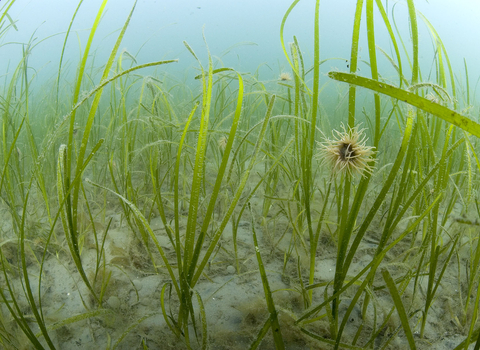
Common eelgrass ©Paul Naylor www.marinephoto.co.uk
Common eelgrass
This seagrass species is a kind of flowering plant that lives beneath the sea, providing an important habitat for many rare and wonderful species.
Scientific name
Zostera marinaWhen to see
January to DecemberTop facts
Category
Stats
Leaf: Usually 20-50cm longSeagrass beds are Priority Habitat under the UK Post-2010 Biodiversity Framework and a Feature of Conservation Importance for which Marine Conservation Zones can be designated. They are on the OSPAR List of Threatened and/or Declining Species and Habitats (declining in Region II – North Sea and Region III – Celtic Sea, and threatened in Region V – Wider Atlantic).
